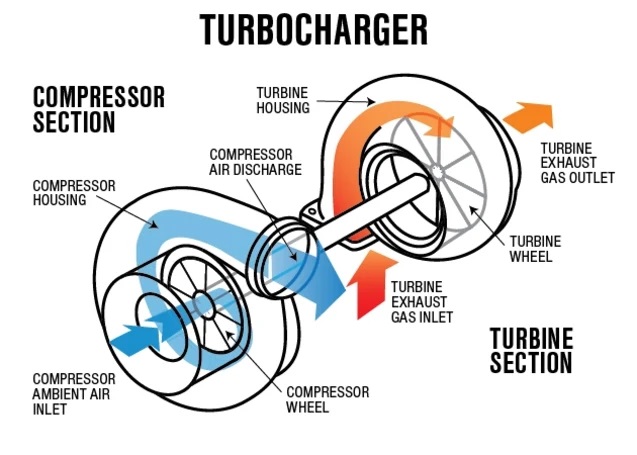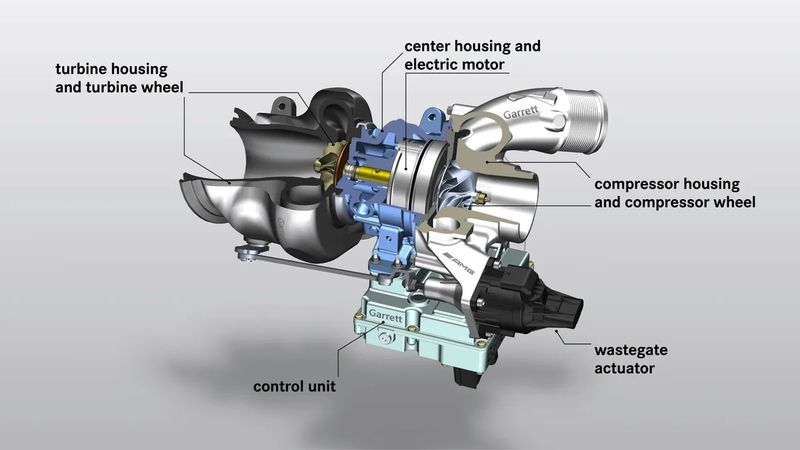Hold onto your seats, because we’re about to enter the turbocharged realm of Chapter 3! Picture this: You’re blowing into a straw to make a paper rocket zoom across the room. Well, that’s a lot like what happens in an F1 car’s Power Unit when it comes to turbocharging. The Power Unit features a component called a turbocharger, which is like a magical fan. This fan spins incredibly fast, sucking in a massive amount of air. And why is air so important? Because it plays a crucial role in generating more power for the engine.

When the turbocharger sucks in air, it compresses it, making it denser and increasing the amount of oxygen available for the engine to burn fuel. This process is like providing the engine with a lungful of fresh air, allowing it to create a bigger explosion and generate more power. But wait, there’s more! The turbocharger doesn’t just compress the air; it also uses the engine’s exhaust gases to spin itself. It’s like harnessing the leftover energy from the engine’s exhaust and converting it into more power. It’s a clever way to make use of energy that would otherwise be wasted. So, how does all this turbocharging action translate into speed? Well, the compressed air, mixed with fuel, creates a more powerful explosion in the engine’s cylinders. This explosion pushes the pistons down with greater force, generating more energy and propelling the car forward with incredible acceleration. So, the next time you watch an F1 race, keep an eye out for the turbocharging magic happening under the hood. It’s the turbocharger that adds that extra kick of power, transforming the car into a lightning-fast beast on the track. Get ready to be blown away by the turbocharged brilliance of the Power Unit!

About Mohammad Adnan
I'm A Sophomore And Automotive Enthusiast, And Writer

